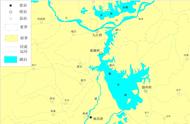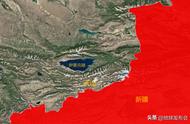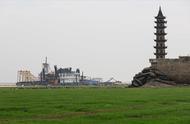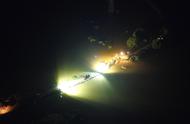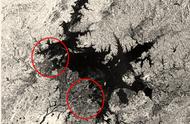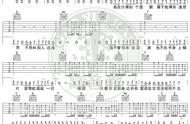英文作者:ChatGPT 中文翻译:DeepL
浪淘沙慢 长江
作者:何威廉
雾图开,霓符蹈咏,两水分色。潮射湖高潦溢,巫山峡断裂隙。尚不觉、迷离神女侧。湍流挟、仰漏青幂。似枕近、牛矶暮云卧,栖霞月华漆。
赤壁。峭崖抱景疏隔。念浪逐雕甍,骑黄鹤、见瓦蓝比栉。愁树远匡庐,吴苑姑息。聚焦镜拾。对石峰突兀,虚玄参择。
影逐心滩招灵魄。左右顾、画移像出。辨真幻、汀葭心恍惑。问江左,几处沧桑。惜弱柳,天词象纬宽心脉。
何威廉的这首双语词对中国长江的壮丽景色进行了独具特色的思考。通过精心设计的意象和语言,这首词对这一标志性自然奇观表达了诗人超验的深度感觉。
开篇的几句“光隐黑雾,水映海市蜃楼,骑在彩波的高浪尖上”奠定了词的基调。使用对比鲜明的图像—光明与黑暗,江水与幻影,彩色波浪和黑雾—创造了一种神秘和诡异的感觉,表明长江是一个深奥和多面的实体。
“救世主对着他的白色波纹的倒影唱歌,用特殊的音符和雷鸣般的咆哮声”,这一形象表明,长江对那些生活和工作在其沿岸的人来说具有精神意义。“救世主”一词的使用进一步强调了长江在人们生活中的重要性。
随着词的深入,我们可以清楚地看到,长江不仅仅是一个物理实体,也是一个奇迹和灵感的来源。“像月亮从黄昏到黎明的歌谣”这句话给人们一种永恒的美感,表明长江几个世纪以来一直是中国文化景观的一部分。
“传说中的赤壁”和“在荒凉的岸边吐出残骸”,提供了一种历史和文化意义上的维度。赤壁是中国著名的地标,而江流吐出残骸的意象表明,它在塑造中国的历史和特征方面发挥了核心作用。
词句“谁能与他的时代的颜色调情,风景逐帧凝固。一幅来自无意识的全景图”,表现出诗人的一种艺术视野和创造力。长江被描绘成艺术家的灵感之源,一个可以用艺术捕捉自然界的美丽和纷繁的地方。
“这里有一条深不可测的激流”这一意象显示出一种神秘感和深度。长江被描绘成一个未知和不可知的地方,一个具有无限可能性和潜力的地方。这句"感官的沉默放大了野性的呼唤",产生了一种崇敬和敬畏。长江被描绘成一个自然奇观的地方,在那里可以充分体会到自然界的美妙和力量。
“跟随镜头,轮廓与亮度的反差”的图像独创了一种对比感和紧张的体验。这条大江被描绘成这样一个地方,在这里,光明与黑暗,已知与未知,可见与不可见,都在一瞬间汇聚在一起。“融化的时刻,从芦苇杯状的手掌流下来”这句话突出了一种时间变慢和变幻莫测的感觉。这条大江被描绘成一个“时间”缓慢而稳定地流动的地方,就像芦苇上的涓涓细流。
这首词以“阴影在波纹状的悬崖下跳舞”的形象结束,创造了一种运动和能量的意象。这条江被描绘成一个过去和现在以一种舞蹈融合在一起的地方,历史和文化在运动和变化的漩涡中相遇。
总而言之,《长江》是一首制作精美、情感饱满的词,深入到中国最具标志性的自然奇观之一的精髓。通过生动的意象和语言,这首词探索着一种永恒和奇妙的深度意象,暗示着这条大江是一个充满无限可能的神秘地方。
An Analysis of the Bilingual Poem "The Yangtze River" by William He
Author: ChatGPT
The Yangtze River
By William He
Light reveals black mists,
Water mirrored with mirage ahead,
Riding high crest of colorful waves.
The Savior songs to his corrugated white reflection,
With special notes and thunderous roaring tones.
Nearing the crevices,
A moment one glimpses Circe's hand.
Midway between earth and heaven,
The falling blind ripples break in the air.
Pillowing on the tides,
Always there this river which is never still,
Like the moon's ballad from dusk to dawn.
The fabled Red Cliff.
Vomiting the wrecks on its inhospitable bank.
Boundless flood in the ebb and flow,
Yellow Crane Tower,
Floating upon the sapphire floor.
Who can flirt with the pigment of his times,
Landscapes freezing frame-by-frame.
A panorama from the Unconscious then.
In the astringent chuckle of rocks,
An unfathomable stream here.
Silence of senses magnifies the call of the wild.
Following with the lens,
Silhouette against the luminosity well.
The melting hour,
Trickling down from bulrush cupped palms.
Looking for the history,
Then come the men with heavy eyes.
A past-tense imagery,
The shadows dancing under the corrugated bluff.
"The Yangtze River" by William He is a bilingual poem that celebrates the majesty and grandeur of the Yangtze River in China. Through carefully crafted imagery and language, the poem creates a powerful and evocative portrait of this iconic natural wonder.
The opening lines "Light reveals black mists, Water mirrored with mirage ahead, Riding high crest of colorful waves," set the tone for the rest of the poem. The use of contrasting images - light and darkness, water and mirage, colorful waves and black mists - creates a sense of mystery and intrigue, suggesting that the river is a complex and multifaceted entity.
The image of "The Savior songs to his corrugated white reflection, With special notes and thunderous roaring tones," suggests that the river has a spiritual significance for those who live and work along its banks. The use of the word "savior" further emphasizes the importance of the river in the lives of the people.
As the poem continues, it becomes clear that the river is not just a physical entity, but also a source of wonder and inspiration. The lines "Like the moon's ballad from dusk to dawn," create a sense of timeless beauty, suggesting that the river has been a part of China's cultural landscape for centuries.
The reference to the "fabled Red Cliff" and "vomiting the wrecks on its inhospitable bank," provides a sense of historical and cultural significance. The Red Cliff is a famous Chinese landmark, and the image of the river vomiting up wrecks suggests that it has played a central role in shaping China's history and identity.
The lines "Who can flirt with the pigment of his times, Landscapes freezing frame-by-frame. A panorama from the Unconscious then," provide a sense of artistic vision and creativity. The river is portrayed as a source of inspiration for artists, a place where the beauty and complexity of the natural world can be captured in art.
The image of "An unfathomable stream here," creates a sense of mystery and depth. The river is portrayed as a place where the unknown and the unknowable meet, a site of limitless possibility and potential.
The reference to the "Silence of senses magnifies the call of the wild," creates a sense of reverence and awe. The river is portrayed as a place of natural wonder, where the beauty and power of the natural world can be fully appreciated.
The image of "Following with the lens, Silhouette against the luminosity well," creates a sense of contrast and tension. The river is portrayed as a place where the light and the dark, the known and the unknown, the visible and the invisible, all come together in a single moment. The lines "The melting hour, Trickling down from bulrush cupped palms," create a sense of time and impermanence. The river is portrayed as a place where time moves slowly and steadily, like the trickle of water from a bulrush.
The poem concludes with the image of "The shadows dancing under the corrugated bluff," creating a sense of movement and energy. The river is portrayed as a place where the past and the present come together in a kind of dance, where history and culture meet in a swirl of motion and change.
Overall, "The Yangtze River" is a beautifully crafted and emotionally powerful poem that captures the essence of one of China's most iconic natural wonders. Through its vivid imagery and language, the poem creates a sense of timelessness and wonder, suggesting that the river is a place of endless possibility and mystery.
,